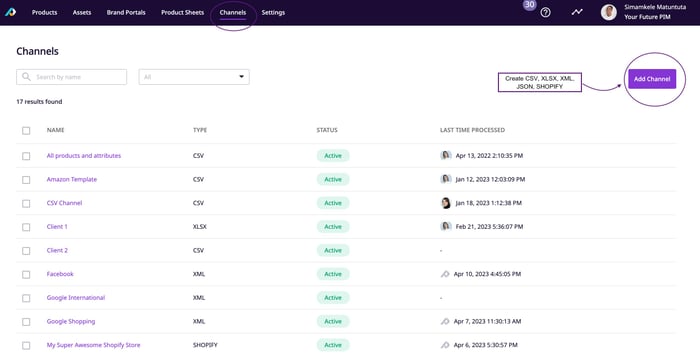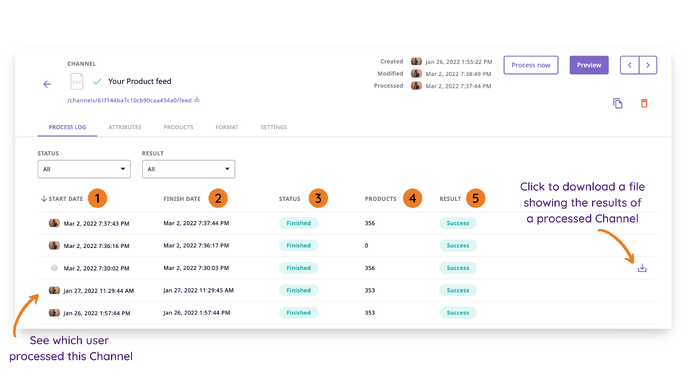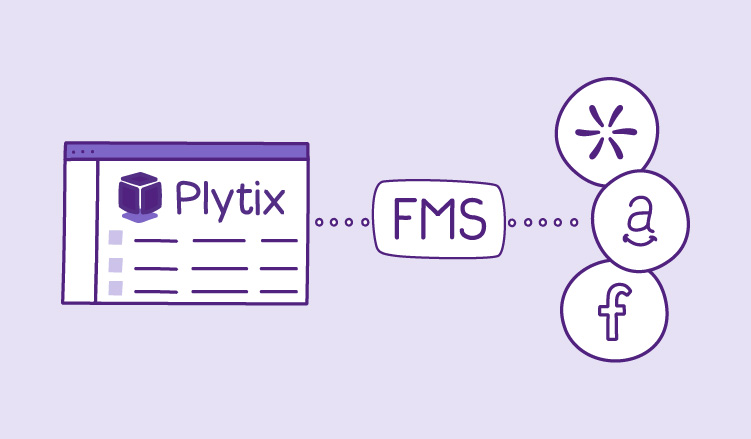A long time ago, spreadsheets changed the data management game for many businesses. The appeal is very clear, they can hold large volumes of complex data—from text to numbers, formulas, labels, and images.
They also offer customizable layout options and data sorting, filtering, and ranking capabilities. On top of that, they are good for sharing information across departments and businesses as they’re easy to attach to emails. These are some of the reasons why organizations across the globe still use them. Not forgetting the fact that almost everyone is used to working on spreadsheets.
But, just because something worked in the past, it doesn’t mean it's the best way now, especially since the world has evolved drastically over the years. Nowadays, there’s a myriad of technological solutions that have revealed the shortcomings of spreadsheets, particularly where data management is concerned.
Whether in the procurement or retailing part of the supply chain, it’s crucial to have access to and share high quality data with all business partners. But that’s not always possible with spreadsheets. As a business owner that deals with tons of suppliers and retail partners, you must have experienced some issues managing data this way and that’s maybe why you’re here looking for a better solution.
We’ll get to how product information management (PIM) software is the exact solution you need in a moment. Let’s first discuss the main challenge that comes with using spreadsheets to manage and share data with different suppliers and retailers.
The challenge of managing and sharing data with different suppliers and retailers
Spreadsheets can do more harm than good when it comes to managing and sharing data with various business partners. That’s because:
1. They have different data needs
Different suppliers and retailers have specific requirements on what product data they need. That means you have to create different versions of the same data to meet each of your supplier and retailer’s requirements. For example, you need to create different product identifiers, descriptions, attributes, and images or drawings. The detail and length of this information also depend on the specified requests from your business partners. In addition to that, each of these partners has their own set number of products they need from you.
Ultimately, you end up having to create and manage multiple spreadsheets that have similar information, with unique elements that cater to the different needs. Let’s not forget that this is also information that you’re sourcing from multiple different spreadsheets. The danger in this is multi-layered:
- Manual entry is inefficient and time-consuming
- The quality of the information cannot be guaranteed because spreadsheet data is prone to errors
- The information lives in siloed file folders
- The risk of sharing the wrong information is high
2. They need the information sent in different formats
When it comes to sharing information with suppliers and retailers, some of them need the information to come in different file formats. This is something that you need to take into account as well. Typically, they send templates, where you have to fill in the required information and send it back. But in other cases, you only receive the data and file format requirements and you have to adhere to that.
Overall, what’s important is that no one understands your products more than you do, and that’s why you need to share all of the necessary information with relevant suppliers and retailers. That way, they will have every type of information they need, at the level of detail they need so that they can analyze and make mutually-beneficial decisions, without any delays. While spreadsheets won’t let you achieve that goal, a PIM tool will.
How PIM transforms your data management and sharing
A product information tool stores and centralizes all of your product information. That includes all written data such as SKUs, product titles, descriptions, attributes, other specifications, and visual assets (i.e. images, videos, PDFs). This already means you’ll be sourcing information from a single location, which reduces the time you’d otherwise use jumping between spreadsheets looking for information you need.
And, next-generation PIMs enable you to organize and maintain high quality data that’s easily shareable everywhere it needs to go. Plytix is exactly this kind of PIM. Let’s look at Plytix's capabilities in this regard.
Plytix: The data management and sharing solution for you
Plytix is not only a PIM for ecommerce, it’s a product database management tool that you can benefit greatly from. In addition to having digital asset management (DAM) capabilities, we have a Channels feature that’s designed to help you meet your business partners’ data requirements without being stuck completing endless variations of the same spreadsheet.
Our Channels give you the flexibility to select the product information from the main database and match the information according to the requirements of the supplier or retailer. Once done, you have to choose the output format (CSV or XLS).

So, how does it work exactly? For each partner, you can:
- Create a channel
- Give it a name
- Choose the output format (to share the data when done)
- Select the products you need to include
- Add the different attribute properties (or required fields) you need to include
- Add, resize, or rename digital assets
But these are just a few highlights of what you can do with Channels. When you’re done, you can process the Channel and export the data, and it will be ready to go where it needs to go.

In the end, you’ll create partner-specific channels with the information needed, and be able to send it to them without any hiccups. With everything living in the same location, all you have to do is select, match, and tweak information as needed. What’s more is that you can bulk update or edit the information whenever needed. And, you can see useful information such as when the last modification was made, who made it and so much more.
This is the kind of visibility and transparency you need so that you no longer deal with miscommunication. What’s worth mentioning is that Plytix offers you unlimited users no matter what plan you choose. This way, this task is a collaborative task, which can help in fast-tracking the sharing of urgent data to supply chain partners.
Essentially, Plytix removes the friction related to managing and sharing data to make your and your team's lives a little bit easier. And, we’re not simply tooting our own horn here. Plytix reviews on G2, the software review site, can attest to our claim.
Here’s an example:

To get a full understanding of how Plytix can work for you and solve your needs, book a demo today. One of our specialists will explain everything in full detail and you can ask any questions that are specific to your business needs.




